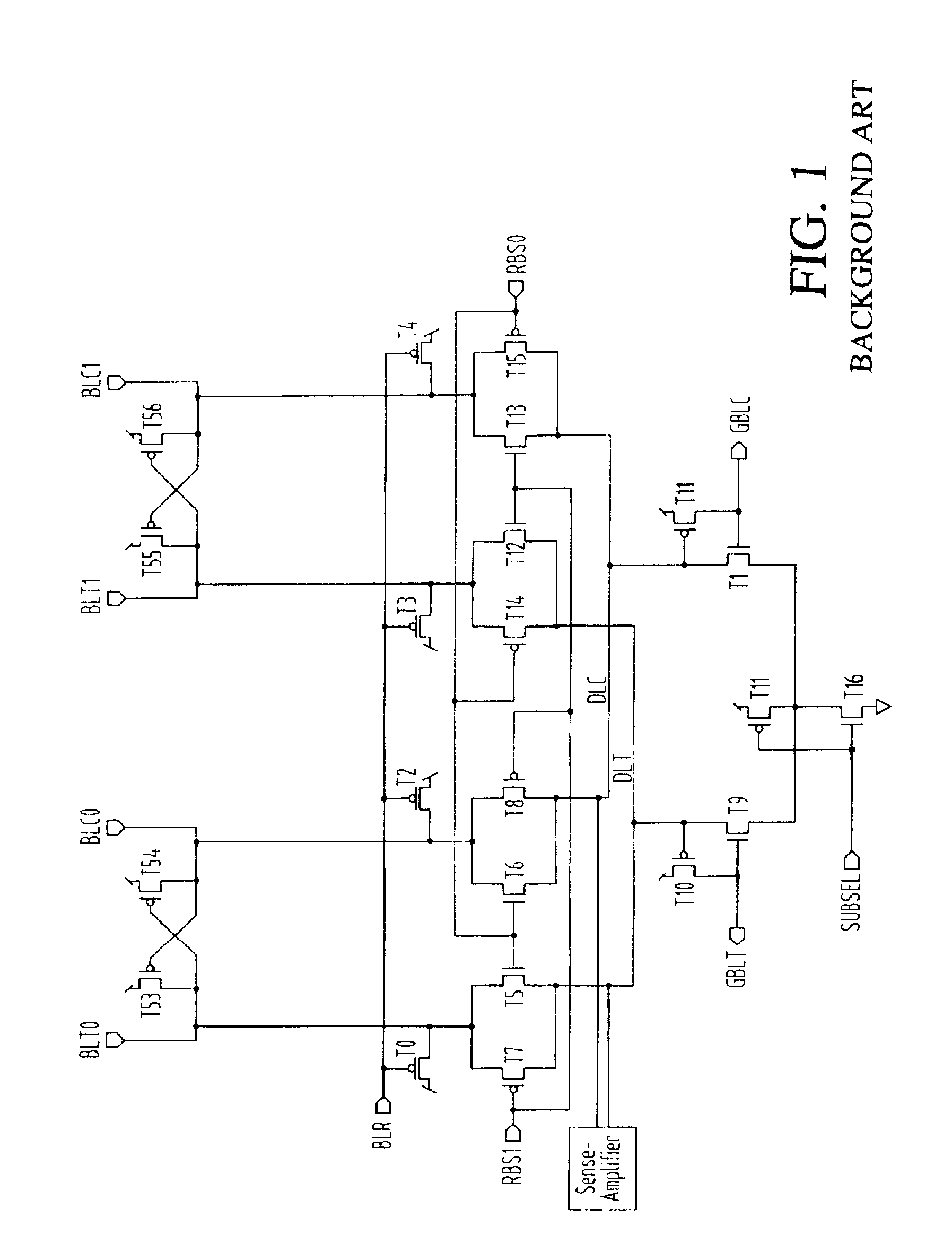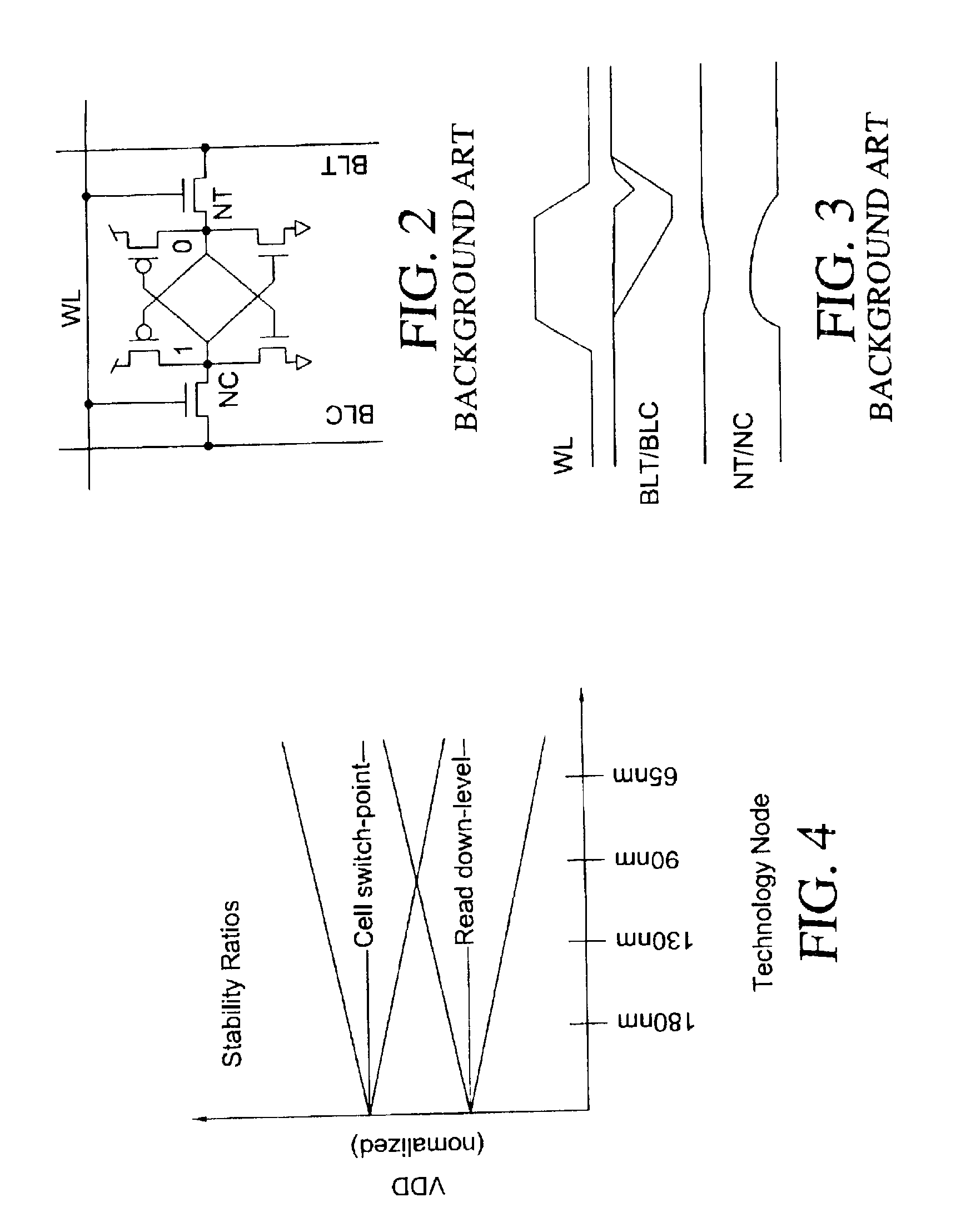Sense-amplifier assist (SAA) with power-reduction technique
a technology of power reduction and amplifier assist, which is applied in the direction of digital storage, instruments, semiconductor devices, etc., can solve the problems of limiting the operating voltage of sram arrays, saa cannot be implemented, and sram may have a problem with meeting the voltage requirements of low-power embedded applications, so as to reduce the power of memory arrays, prevent leakage, and maintain read data timing
- Summary
- Abstract
- Description
- Claims
- Application Information
AI Technical Summary
Benefits of technology
Problems solved by technology
Method used
Image
Examples
Embodiment Construction
[0044]The present invention is an apparatus and method for improving the operating voltage range and stability margin of SRAM arrays. As semiconductor technology scales down to smaller feature sizes, SRAM cells are becoming more sensitive to lower operating voltages. For example, when a cell is read, the data in the SRAM cell can be disturbed or distorted.
[0045]FIG. 5 shows an exemplary block diagram of the SSA circuitry 500 of the present invention. In particular, FIG. 5 shows each subarray, bank or macro 506, 508, 510 of the SRAM apparatus has a mask-bit register 507, 511, 515. During functional tests, the subarrays, banks or macros are tested to a low-voltage corner by a BIST / TESTER 501. Subarrays with single-cell failures that go beyond redundancy repair capability have their mask registers set to ground (GND). Single cell failures induced in the field can be easily repaired using this circuitry. Setting the mask registers 507, 511, 515 to GND activates SAA circuitry 500 of the ...
PUM
 Login to View More
Login to View More Abstract
Description
Claims
Application Information
 Login to View More
Login to View More - R&D
- Intellectual Property
- Life Sciences
- Materials
- Tech Scout
- Unparalleled Data Quality
- Higher Quality Content
- 60% Fewer Hallucinations
Browse by: Latest US Patents, China's latest patents, Technical Efficacy Thesaurus, Application Domain, Technology Topic, Popular Technical Reports.
© 2025 PatSnap. All rights reserved.Legal|Privacy policy|Modern Slavery Act Transparency Statement|Sitemap|About US| Contact US: help@patsnap.com



